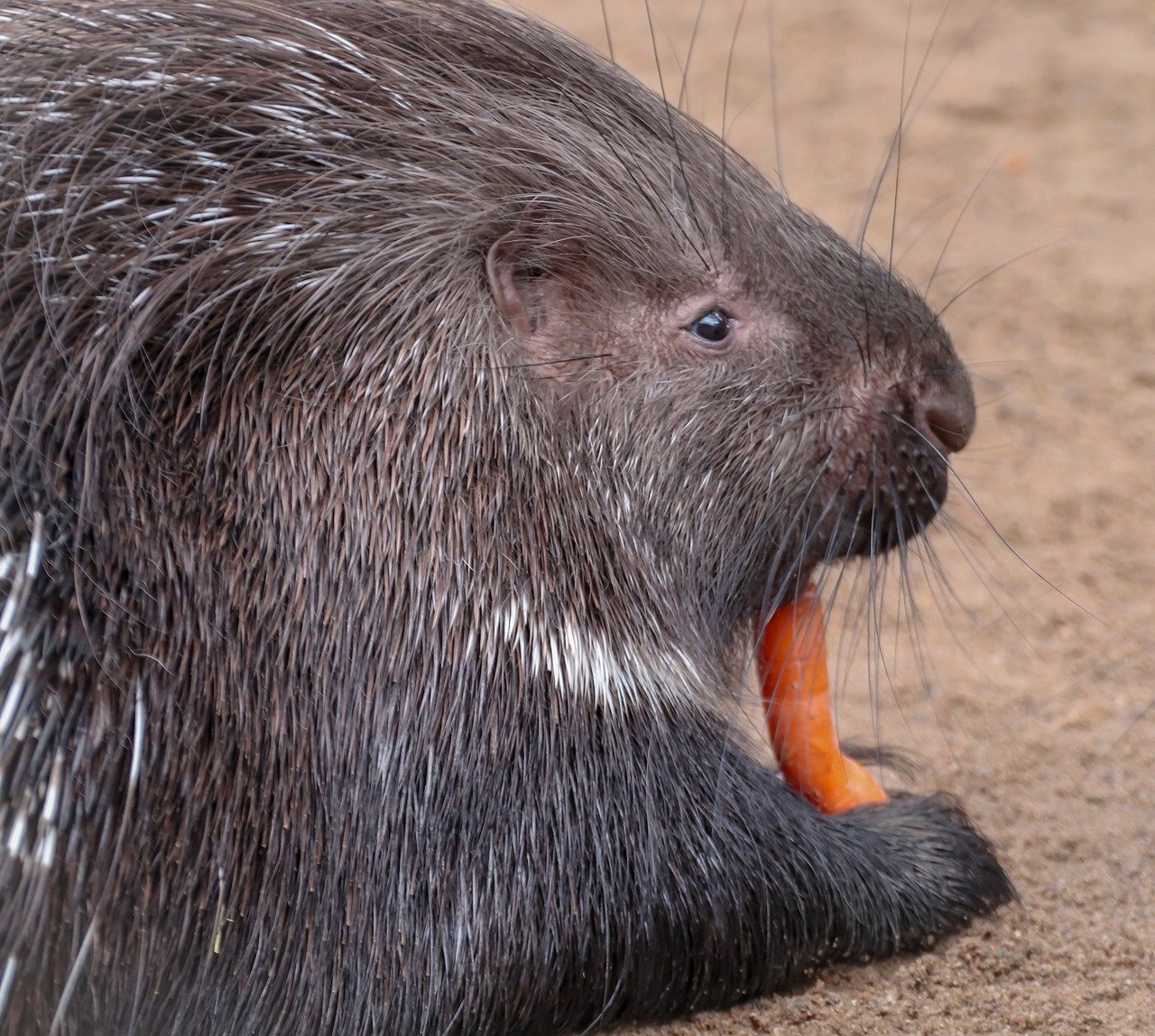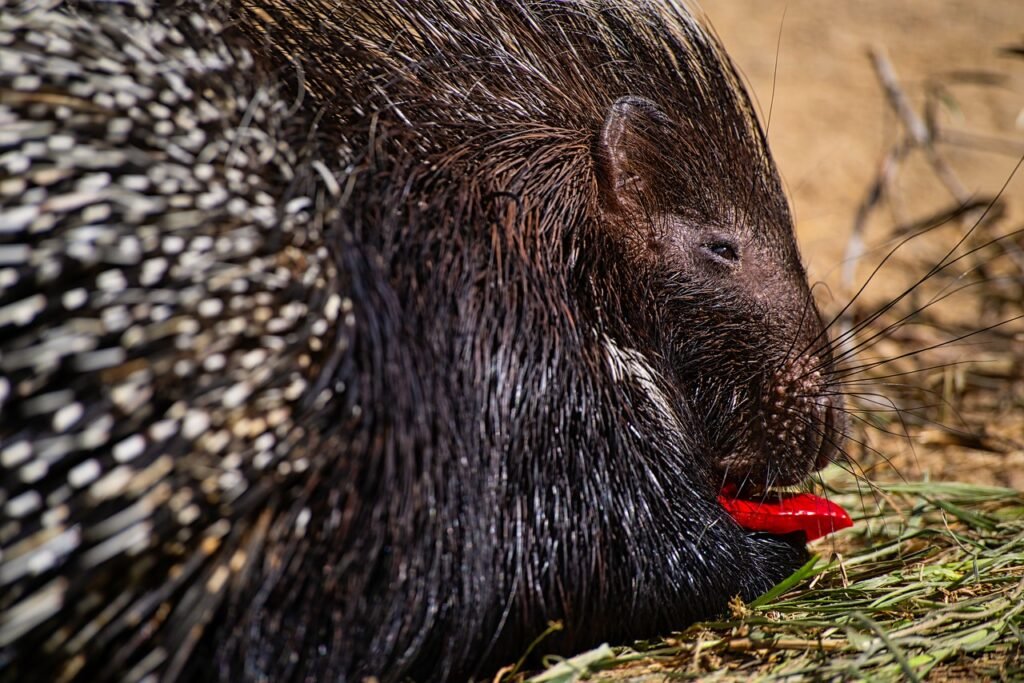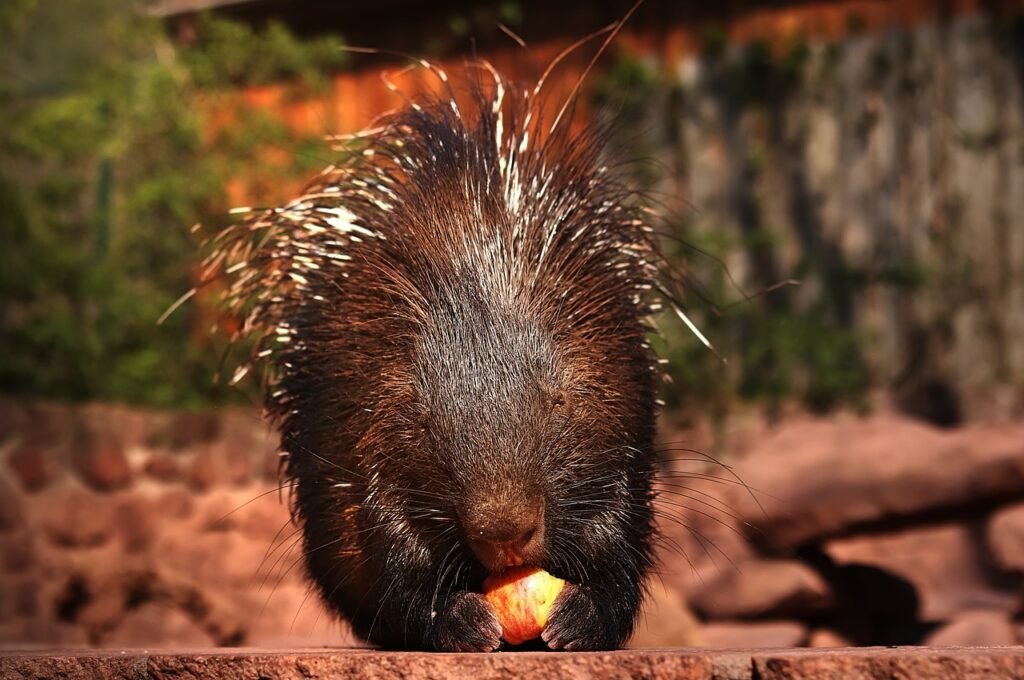Porcupines, with their distinctive quills and endearing appearances, are herbivores known for their unique dietary preferences. In the wild, these fascinating creatures follow a natural diet that revolves around plant-based foods. From munching on bark to indulging in berries, porcupines have evolved to thrive on a diverse array of vegetation. In this exploration, we delve into the intricacies of the natural diet of porcupines, shedding light on the plant-based delights that sustain these quilled foragers.
Bark Buffet: A Primary Source of Nutrition
One of the primary components of a porcupine’s natural diet is bark. Armed with strong, chisel-like incisors, porcupines adeptly strip bark from a variety of trees. The inner layer of bark, rich in nutrients, serves as a crucial source of sustenance. This behavior not only provides porcupines with essential nutrients but also aids in maintaining healthy dental hygiene, as the gnawing action helps wear down their ever-growing teeth.
Leafy Greens: A Feast for Foragers
Porcupines are avid consumers of leafy greens, incorporating a variety of plant foliage into their diet. From grasses and herbs to shrubs and tree leaves, these leafy greens contribute essential vitamins and minerals. The diverse range of vegetation not only offers nutritional benefits but also adds flavor and texture to the porcupine’s daily foraging routine.
Fruits and Berries: Nature’s Sweet Treats
While fruits and berries are not a staple in a porcupine’s diet, they do indulge in these sweet treats when available. Apples, cherries, and other fruits, along with an assortment of berries, provide natural sugars and additional nutrients. However, these fruity delights are usually consumed in moderation, as the primary focus remains on plant material with higher fiber content.
Roots and Tubers: Subterranean Delicacies
Porcupines exhibit a talent for digging, and their subterranean expeditions often lead to the discovery of roots and tubers. Consuming roots such as dandelion and tubers like sweet potatoes adds diversity to their diet. These underground delicacies offer a mix of carbohydrates and minerals, contributing to the overall nutritional balance.
Nutty Nosh: Seeds and Nuts
Porcupines are skilled foragers when it comes to seeds and nuts. Acorns, pine nuts, and other seeds found in cones provide a source of healthy fats and proteins. These nutty indulgences add richness to the porcupine’s diet, offering a balance of essential nutrients to support their energy requirements.
The Importance of a Varied Diet
Exploring the natural diet of porcupines highlights the significance of dietary diversity. Their foraging behavior, encompassing bark, leaves, fruits, roots, and nuts, showcases the adaptability and resourcefulness of these quilled herbivores. A varied diet not only meets nutritional needs but also ensures that porcupines receive a spectrum of flavors and textures that mimic their natural environment.
Replicating the Wild Diet in Captivity
For those caring for porcupines in captivity, replicating aspects of their wild diet is crucial for their well-being. Offering a mix of bark, leafy greens, occasional fruits, and nuts can help mimic the nutritional richness of their natural habitat. Caregivers should also consider the importance of providing opportunities for foraging and chewing to maintain dental health.
Nourishing the Quilled Foragers
From bark to berries, the natural diet of porcupines is a testament to their adaptability and resilience as herbivores. Understanding their foraging behaviors and dietary preferences allows caregivers to create a nourishing environment that aligns with their natural instincts. By exploring the plant-based delights that sustain porcupines in the wild, we gain valuable insights into providing optimal care for these quilled foragers in captivity, ensuring a happy and healthy life for our porcupine companions.



